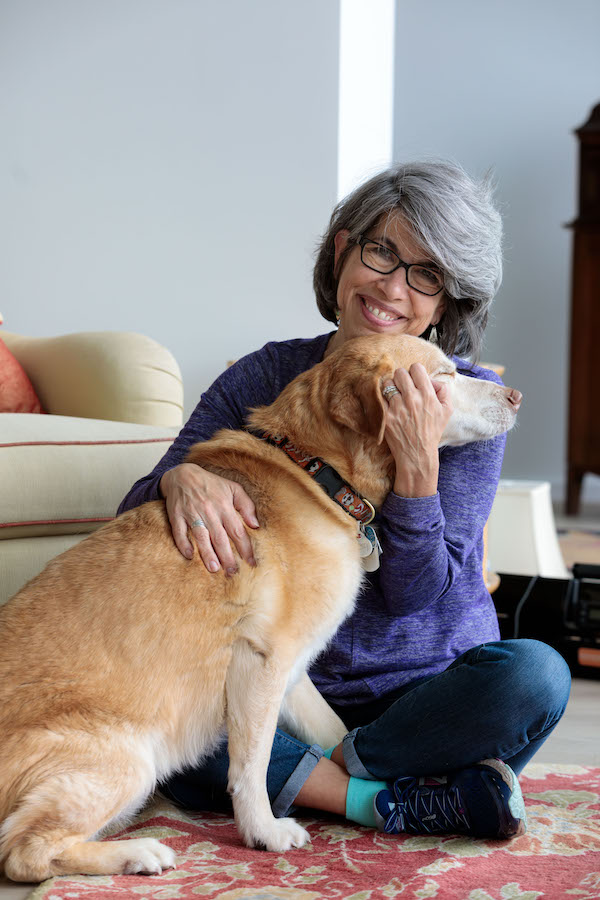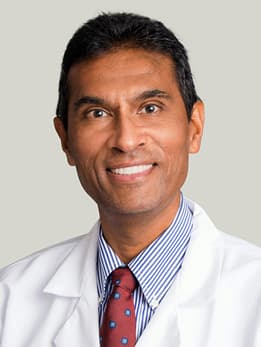A heart transplant patient's journey, 'From very ill to embracing life'

For most of her life, Kay Fricke had avoided any exertion that would put stress on her heart. “Never be the person who runs to catch a bus,” a doctor told her. “Always wait for the next one.”
So when UChicago Medicine cardiologist Nir Uriel, MD, told her she had no exercise limitations following her successful heart transplant, she wasn’t just surprised.
“The thought of it was terrifying,” she said.
Fricke’s life as a heart patient began when she was 10. That was when her 20-year-old brother, Jimmy, learned he had a genetic heart condition called hypertrophic cardiomyopathy, which causes the walls of the heart muscle to thicken. Hypertrophic cardiomyopathy is the most common cause of sudden cardiac arrest in young people. Jimmy collapsed and died at age 23.
Fricke and her siblings were tested for the disease. “Soon after, I had the first of many heart catheterizations,” said Fricke, the only other child in the family to inherit the condition.
When she was a freshman in college, doctors performed a surgical procedure called septal myectomy to reduce the thickening of her heart muscle. When she was in her mid-30s, a cardioverter defibrillator – then a newly available device – was implanted to deliver an electric shock to her heart if it started beating out of control.
“Between the surgery and the defibrillator, I thought I was fixed,” Fricke said. “No one was talking about transplant.”
But in her early 50s, Fricke started noticing that everyday activities such as walking down a hall, crossing the street and carrying files for work left her short of breath. “The most basic things in life became impossible for me to do,” she said.
While visiting family in Chicago in spring 2014, Fricke collapsed and was hospitalized at the University of Chicago Medicine. Uriel, director of heart failure, transplant and mechanical circulatory support, and Valluvan Jeevanandam, MD, chief of cardiac and thoracic surgery, told her she’d need a heart transplant soon.
I had such trust in these doctors and their team.
Fricke researched transplant programs at academic medical centers across the country. In the end, she decided to stay at UChicago Medicine. “I had such trust in these doctors and their team,” Fricke said. “I had faith in their judgment and confidence my voice would be heard.”
In an effort to postpone the transplant, a pacing device was implanted to help Fricke’s heart beat in a more efficient way. It bought her about a year.
“After trying all the therapies and devices available, the time for transplant had come,” Uriel said. “Kay was still a good candidate, but we had a window of opportunity before she would get too sick.”

In 2016, on March 26 — Jimmy’s birthday — a donor heart became available. The transplant surgery and her recovery went smoothly.
“Kay’s new heart has allowed her to do things she had never done before,” Uriel said. “Seeing her go from very ill to embracing life is, for me, the biggest joy.”
The UChicago Medicine care team will follow Fricke for the rest of her life. “I used to dread going and hearing about my declining health and the need for a transplant,” she said. “Now I enjoy seeing the group of people who, together, gave me back my life.”

Valluvan Jeevanandam, MD
Dr. Valluvan Jeevanandam specializes in the surgical management of heart failure, and is an expert in high-risk cardiac surgery. He has performed more than 1,000 heart transplants — including the total artificial heart — and countless cardiac surgery procedures.
Learn more about Dr. Jeevanandam
Heart Failure and Transplantation
At the University of Chicago Medicine, we bring the best minds in medicine together to meet the needs of patients facing heart failure and transplant.
Read more about our heart failure expertise